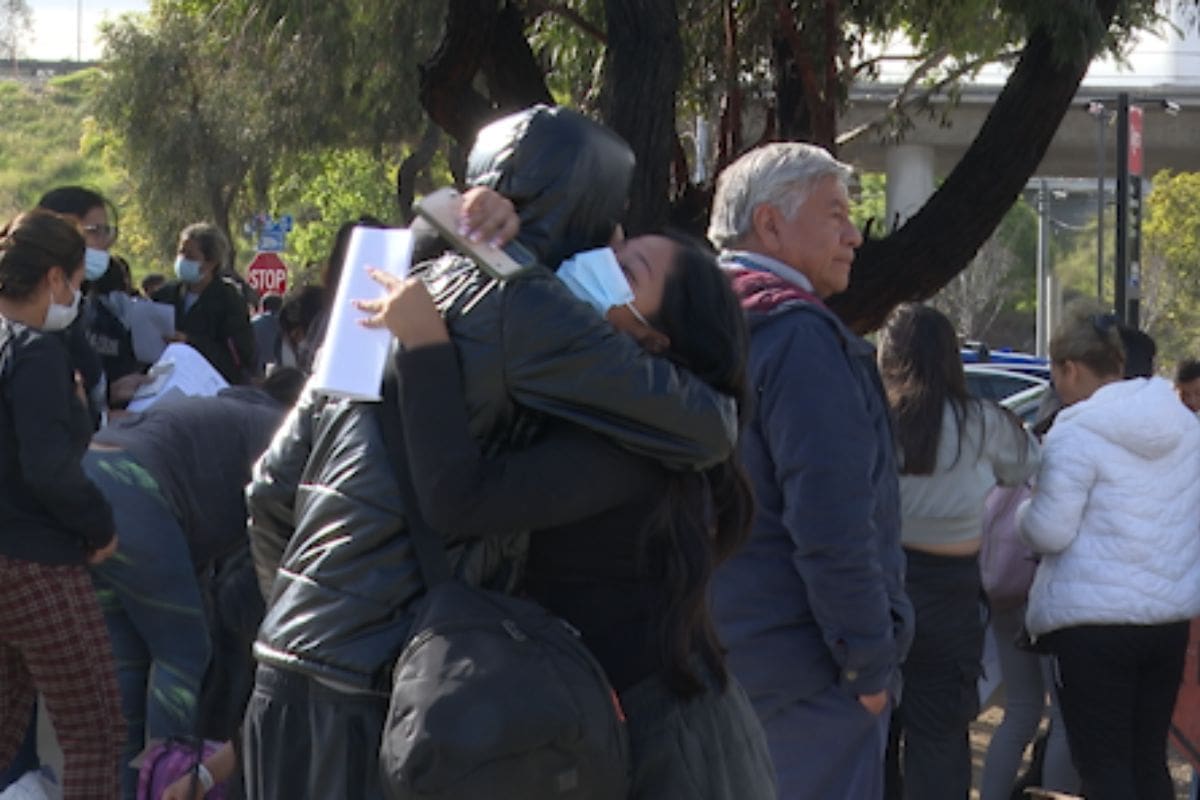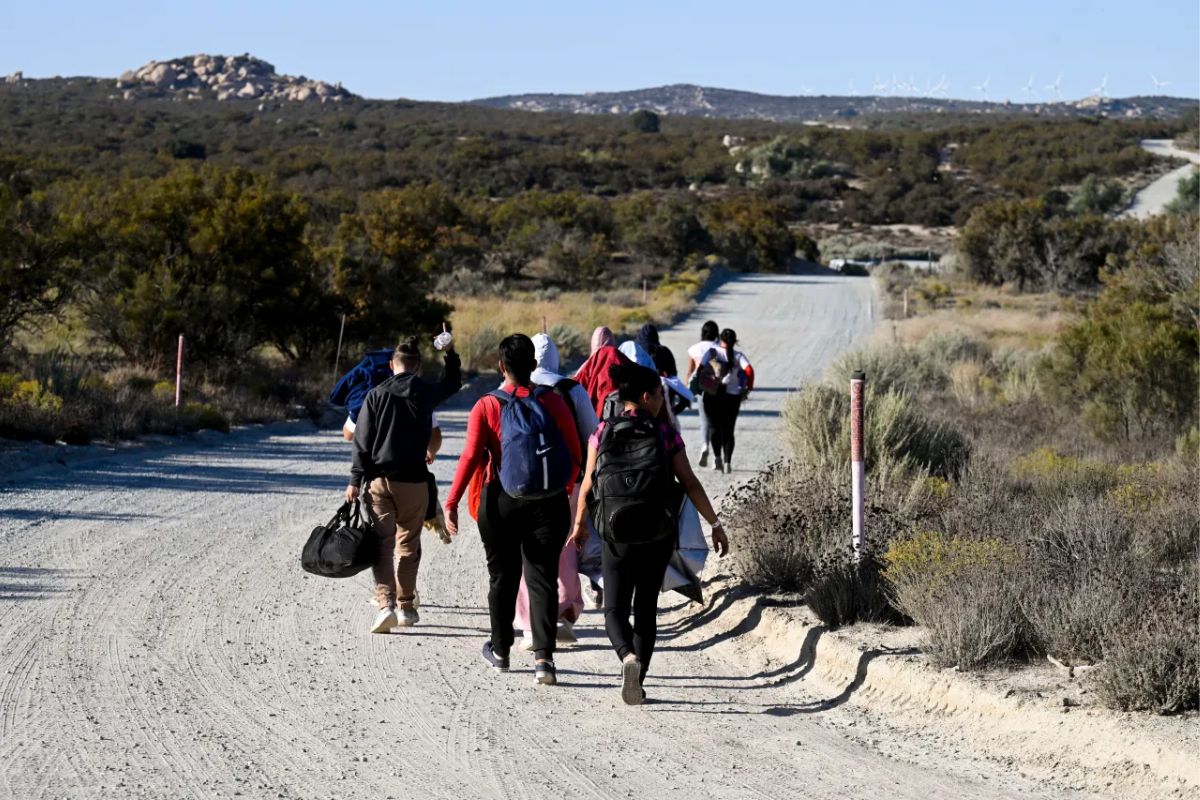California Migrant Crossing: The drastic decline in border crossings at Jacumba, a former hotspot in California, has raised eyebrows and prompted a closer examination of the underlying causes. This substantial 90% drop in migration is not an isolated event but rather a reflection of broader trends and dynamics at play.
By dissecting the factors contributing to this sharp decrease and analyzing the implications for border security and immigration policies, a clearer picture emerges of the shifting landscape in this critical region. A deeper understanding of these developments is crucial for stakeholders seeking to navigate the complexities of border management and enforcement.
Decline in Border Crossings at Jacumba
The significant decrease in border crossings at Jacumba, previously a high-traffic area for unlawful migrant activity, has been a notable shift observed by Mexico’s National Institute of Migration (INM) with a reported 90% decline since December. This decline marks a substantial change in the dynamics of migration patterns in the region, particularly in the San Diego Sector, where Jacumba was once known as one of the busiest spots for unlawful border crossings.
The reasons behind this sharp decrease are multifaceted. One possible explanation could be heightened enforcement measures by border patrol agencies on both sides of the border. Increased surveillance, stricter border policies, and improved coordination between U.S. and Mexican authorities may have contributed to dissuading migrants from attempting to cross at this location. Additionally, the overall decrease in unlawful border crossings across various sectors could indicate a broader trend influenced by factors such as changing economic conditions, shifting migration patterns, or even public health concerns like the COVID-19 pandemic.
Understanding the specific factors driving this decline at Jacumba is essential for policymakers and border security agencies to effectively address future challenges and opportunities in managing border security and immigration flows. Analyzing the data and trends associated with this decline will provide valuable insights into the effectiveness of current border enforcement strategies and help guide future decision-making processes.
Factors Contributing to Decrease
An analysis of the declining border crossings at Jacumba reveals a combination of factors contributing to this notable decrease in unlawful migrant activity. One significant factor is the increased patrols on the Mexican side of the border, which have proven to be instrumental in preventing migrants from entering the U.S. through the Jacumba area. David Pérez Tejada, head of INM in Baja California, has highlighted the effectiveness of this heightened enforcement in deterring most migrants from attempting crossings in the region. The presence of these patrols acts as a strong deterrent, dissuading individuals from risking illegal entry into the United States.
Furthermore, the collaborative efforts between U.S. and Mexican authorities have also played a crucial role in reducing border crossings in Jacumba. By working together to enhance border security measures and intelligence sharing, both countries have managed to create a more robust barrier against unlawful migration in this particular area. This coordinated approach has not only increased the efficiency of border control but has also sent a clear message to potential migrants about the consequences of attempting unauthorized entry.

Shift in Migration Patterns
Shifts in migration patterns highlight the evolving strategies employed by migrants navigating the complex landscape of border security and enforcement measures. With crossings declining in Jacumba, migrants are now turning to alternative routes west of Jacumba in Campo, California, and in rocky terrain near a Sempra Energy windmill facility. This shift indicates a strategic adaptation to enforcement measures, as migrants seek new pathways to evade detection and reach their desired destinations.
Additionally, the urban center between Tijuana and San Diego has once again emerged as a focal point for unlawful border crossings, suggesting a cyclical nature to migration patterns in response to enforcement efforts.
Moreover, some migrants have resorted to maritime methods, such as utilizing boats or swimming around barriers along the coast to reach the U.S. This shift towards maritime migration underscores the resourcefulness and determination of migrants in overcoming physical barriers and enhancing their chances of successful entry into the country.
Impact on Border Patrol Operations
Border Patrol operations in San Diego have undergone strategic adjustments in response to the significant decrease in border crossings at Jacumba. The slowdown in traffic has led authorities to intensify patrols in the area, resulting in a noticeable decrease in crossings. Although official figures are pending, the impact of these changes is evident.
Despite the decrease in border crossings at Jacumba, Border Patrol buses are still actively involved in dropping off migrants at the Iris Avenue trolley station in San Ysidro post-processing. This ongoing practice sees as many as 800 migrants released daily, underscoring the persistent challenges faced by border enforcement agencies in managing migrant flows.
The shift in migration patterns has necessitated a reevaluation of Border Patrol strategies in the region. The agency continues to adapt its operations to address the evolving dynamics of border crossings, ensuring effective enforcement measures are in place despite the reduced traffic at Jacumba.
As Border Patrol in San Diego navigates this period of decreased border activity, their focus remains on maintaining border security and upholding immigration laws. The impact of these operational adjustments extends beyond Jacumba, shaping enforcement practices across the broader San Diego border region.


ALSO READ: Former California Rideshare Driver Arrested for Antisemitic Assault
News in Brief
Border Crossings Plummet in Former California Hotspot. Migrant crossings at Jacumba, once a bustling area for illegal border crossings, have plummeted by 90%. Enhanced patrols on the Mexican side and collaborative efforts between U.S. and Mexican authorities have deterred migrants. Despite the decline, migrants adapt, seeking alternative routes and maritime methods. Border Patrol adapts operations, intensifying patrols while still processing and releasing migrants. The shift underscores challenges in managing border security amidst evolving migration patterns.

